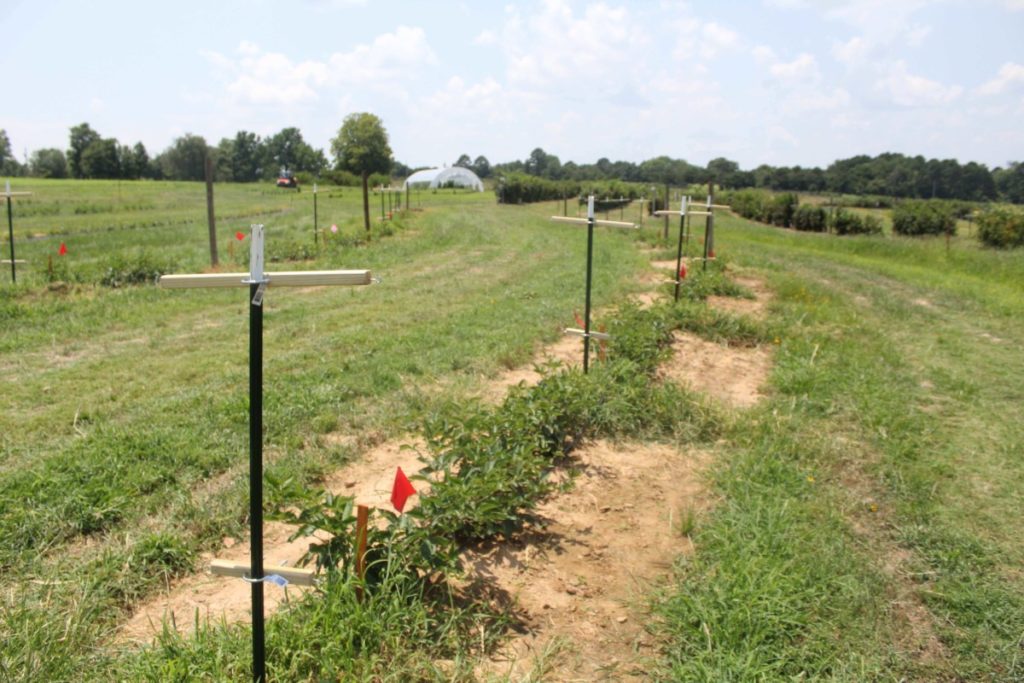Kayla Knepp, Masters Graduate Student, University of Arkansas
Weed management continues to be a major issue in blackberries. With increasing acres being dedicated to blackberry production there is a growing need to find more tools to combat the timeless issues of weeds. New plantings are particularly sensitive to weed competition and can quickly become overgrown. Also, due to blackberries being a perennial broadleaf crop, chemical weed management can be tricky. The opportunity to start with a clean field only happens once and the need to keep it clean continues throughout the duration of the blackberries production life. This trial is looking into chemical control methods for weed management in newly planted blackberries.
The trial began in May of 2021 in Fayetteville, AR and Clarksville, AR. “Ouachita” seedlings were transplanted and sprayed with the experimental herbicides. Directed sprays allowed the lower canopy to intercept some herbicide to simulate unshielded applications. Evaluation of plant safety was the primary subject of interest. Preemergent applications of pendimethalin (Prowl H2O), S-metolachlor (Dual Magnum), flumioxazin (Chateau), and mesotrione (Callisto) were applied. Also included were commercial standards oryzalin (Surflan) and napropamide (Devrinol) and an untreated check.
| Treatment | Chemical | Trade name | Rate (product) | Rate (ai) |
| 1 | Weed Free Check | N/A | N/A | N/A |
| 2 | Oryzalin | Surflan | 3 qt/A | 4 lb ai/A |
| 3 | Napropamide | Devrinol | 8 lbs/A | 4 lb ai/A |
| 4 | Pendimethalin | Prowl H2O | 3.2 qt/A | 3 lb ai/A |
| 5 | S-metolachlor | Dual Magnum | 1.5 2 pt/A | 1.425 lb ai/A |
| 6 | Flumioxazin | Chateau | 6 oz/A | 3 oz ai/A |
| 7 | Mesotrione | Callisto | 4.5 fl oz/A | 2.25 oz ai/A |
During the first year, plots were kept weed-free with routine applications of fluazifop (Fusilade) and hand-weeding when herbicides were determined to have broken down on a plot by plot basis.

Plots were maintained as weed-free with notable weedy checks between.
Preliminary results showed that between one and two weeks after treatment the flumioxazin and mesotrione caused unacceptable foliar injury. At that growth stage all plants maintained similar overall growth and development. The effects of mesotrione persisted long into the season and the plants were clearly stunted relative to the untreated checks, with 17 to 23% reduction in height. In contrast, effects of flumioxazin were no longer visible after one month.
Results of mesotrione caused long-lasting, though initially minor, injury. At the end of the season the effect of stunted growth was visible. Pendimethalin and S-metolachlor have displayed no injury to newly planted blackberries. Aside from mesotrione, other materials may be justified for recommendations or registrations for use in first-year blackberry plantings based on these preliminary findings. It will be important to collect second year data to evaluate the effects on yield.